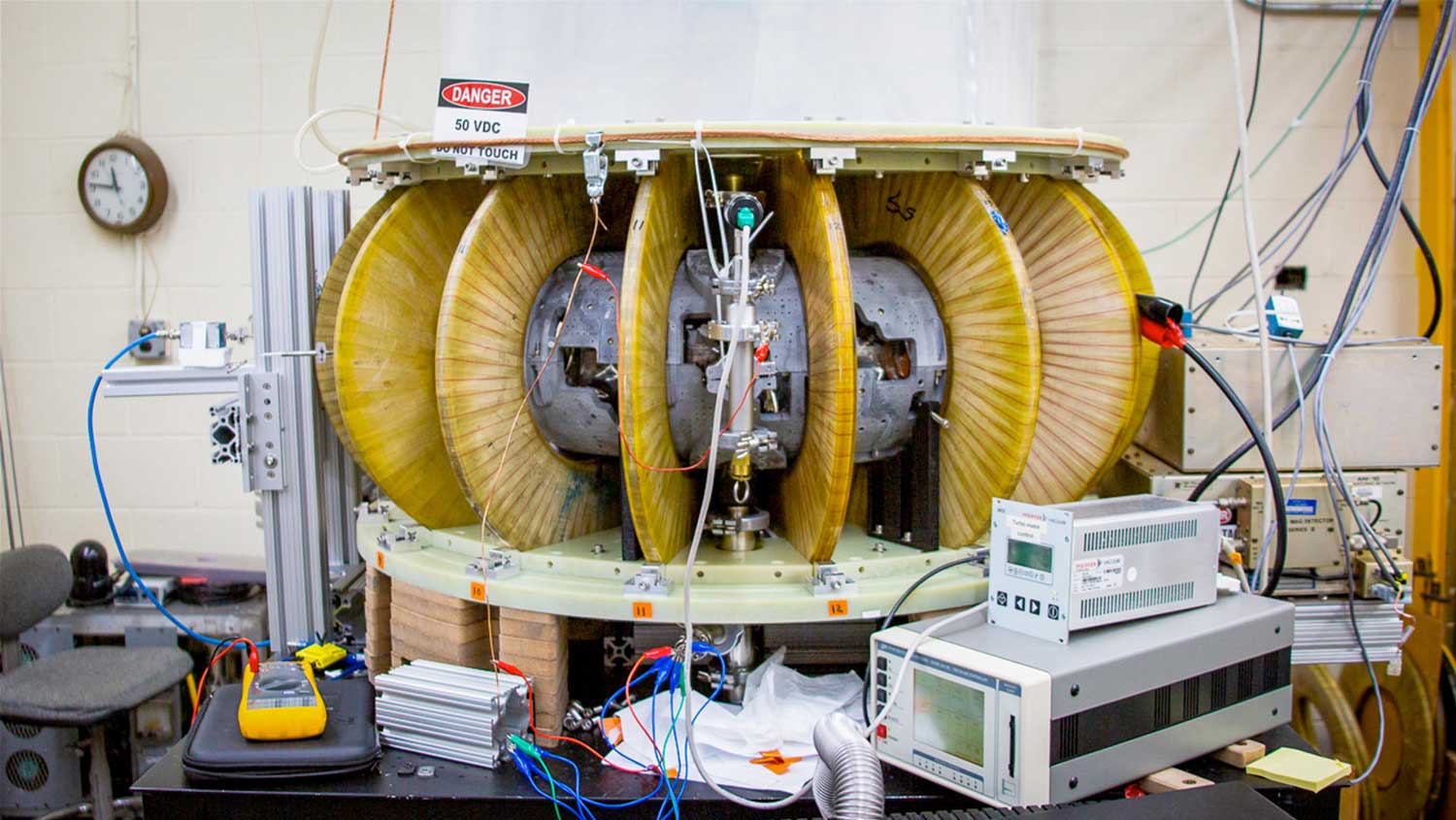Researchers at the U.S. Department of Energy’s (DOE) Princeton Plasma Physics Laboratory (PPPL) have built a stellarator. This is a torus-shaped facility for the magnetic confinement of a hot plasma with the aim of generating energy through nuclear fusion. The team also used 3D printing in their work.
“Using permanent magnets is a completely new way to design stellarators,” said Tony Qian, a graduate student in the Princeton Program in Plasma Physics, which is based at PPPL. Qian was the lead author of papers published in the Journal of Plasma Physics and Nuclear Fusion that detail the theory and engineering behind the device, known as MUSE. “This technique allows us to test new plasma confinement ideas quickly and build new devices easily.”
Unlike conventional stellarators, which rely on complex electromagnets, permanent magnets do not require electrical currents to generate their fields. They can be purchased commercially and then embedded in a 3D-printed shell around the device’s vacuum vessel that contains the plasma.
“MUSE is largely constructed with commercially available parts,” said Michael Zarnstorff, a senior research physicist at PPPL and principal investigator of the project. “By working with 3D-printing companies and magnet suppliers, we can shop around and buy the precision we need instead of making it ourselves.”
The idea of using permanent magnets as the basis for a new, less expensive type of stellarator came to Zarnstorff back in 2014. “I realized that even if they were situated alongside other magnets, rare-earth permanent magnets could generate and maintain the magnetic fields necessary to confine the plasma so fusion reactions can occur,” Zarnstorff said, “and that’s the property that makes this technique work.”
“Typical stellarator magnets are very difficult to machine because you have to do so very precisely,” said Amelia Chambliss, a graduate student in Columbia University’s Department of Applied Physics and Applied Mathematics who helped design MUSE during a DOE Science Undergraduate Laboratory Internship at PPPL a few years ago. “So, the idea that we can use lots of discrete magnets to do the job instead is very exciting. It’s a much easier engineering problem.”
In addition to this engineering breakthrough, MUSE also exhibits a theoretical property, quasisymmetry, to a higher degree than any other stellarator to date. It is also the world’s first device designed specifically for one type of quasisymmetry, quasi-axial symmetry. “In fact, MUSE’s quasisymmetry optimization is at least 100 times better than any existing stellarator,” Zarnstorff said.
The PPPL team is planning future experiments to determine the exact nature of MUSE’s quasi-symmetry and thus how well the device prevents hot particles from migrating from the core of the plasma to the edge, which complicates the fusion reactions.
“To me, the most important thing about MUSE is that it represents a creative way to solve a difficult problem,” Chambliss said. “It uses lots of open-minded and innovative approaches to solve long-standing stellarator problems. As long as the community continues to think in this flexible way, we’ll be in good shape.”
The research was supported by DOE under contract number DE-AC02-09CH11466, the PPPL Laboratory Directed Research and Development Program and the National Science Foundation’s Graduate Research Fellowship Program under grant number DGE-2039656.
Subscribe to our Newsletter
3DPresso is a weekly newsletter that links to the most exciting global stories from the 3D printing and additive manufacturing industry.





















